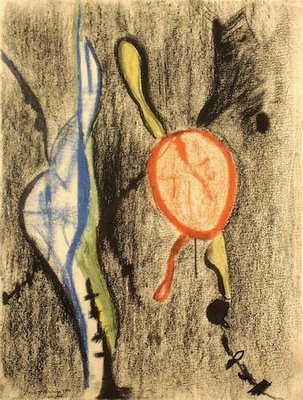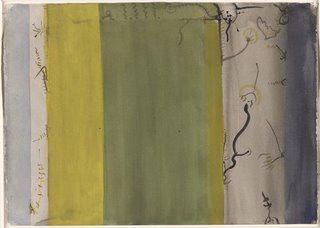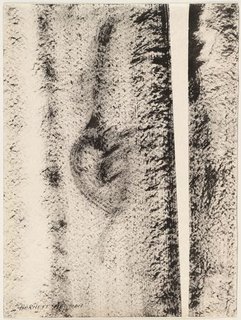Barnett Newman’s summers in Massachusetts

New York painter Barnett Newman destroyed nearly all of his early work, so that the surviving record of his career seems to begin with a series of crayon drawings that he started making in Gloucester during the summer of 1944.

Newman (1905-1970) had summered on and off in New England since at least 1936, when he and his new bride Annalee spent their honeymoon touring sites associated with Ralph Waldo Emerson, Henry David Thoreau and Nathaniel Hawthorne in Concord, Massachusetts, and then spent the rest of the summer in Ogunquit, Maine.
 In the early 1940s, as Ann Temkin of New York’s Museum of Modern Art reports in her 2002 book “Barnett Newman,” Newman seems to have stopped making art for a while (some blame it on his disgust at World War II), but he was studying natural science. In 1940, he and Annalee studied birds and ocean life at an Audubon Society camp in Newcastle, Maine.
In the early 1940s, as Ann Temkin of New York’s Museum of Modern Art reports in her 2002 book “Barnett Newman,” Newman seems to have stopped making art for a while (some blame it on his disgust at World War II), but he was studying natural science. In 1940, he and Annalee studied birds and ocean life at an Audubon Society camp in Newcastle, Maine.The summer of 1944 was Newman’s third summer in Gloucester. The biomorphic abstractions he produced feel like a hybrid of Arshile Gorky, Joan Miro and Wassily Kandinsky, with a marine flavor to his forms. By the time he summered in Provincetown the following year, he seems to have already begun to develop the vertical stripe or dagger motifs that would evolve into his trademark “zips.”
Images from top to bottom: “The Blessing,” 1944, oil crayon and wax crayon on paper; “Untitled,” 1945, watercolor on paper; and “Untitled,” 1946, ink on paper. All courtesy of the Museum of Modern Art, © 2007 Barnett Newman Foundation / Artists Rights Society (ARS), New York.






0 Comments:
Post a Comment
<< Home